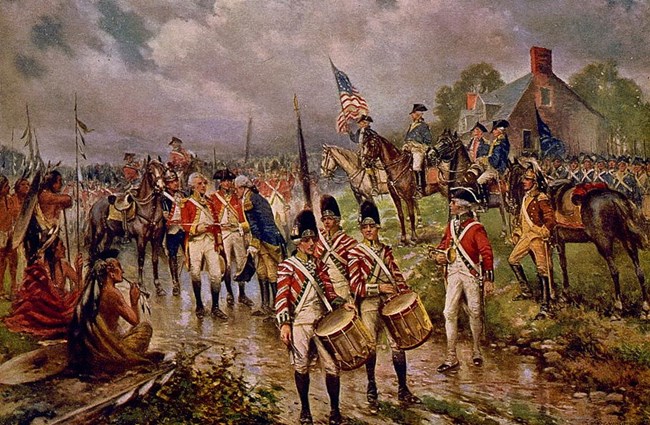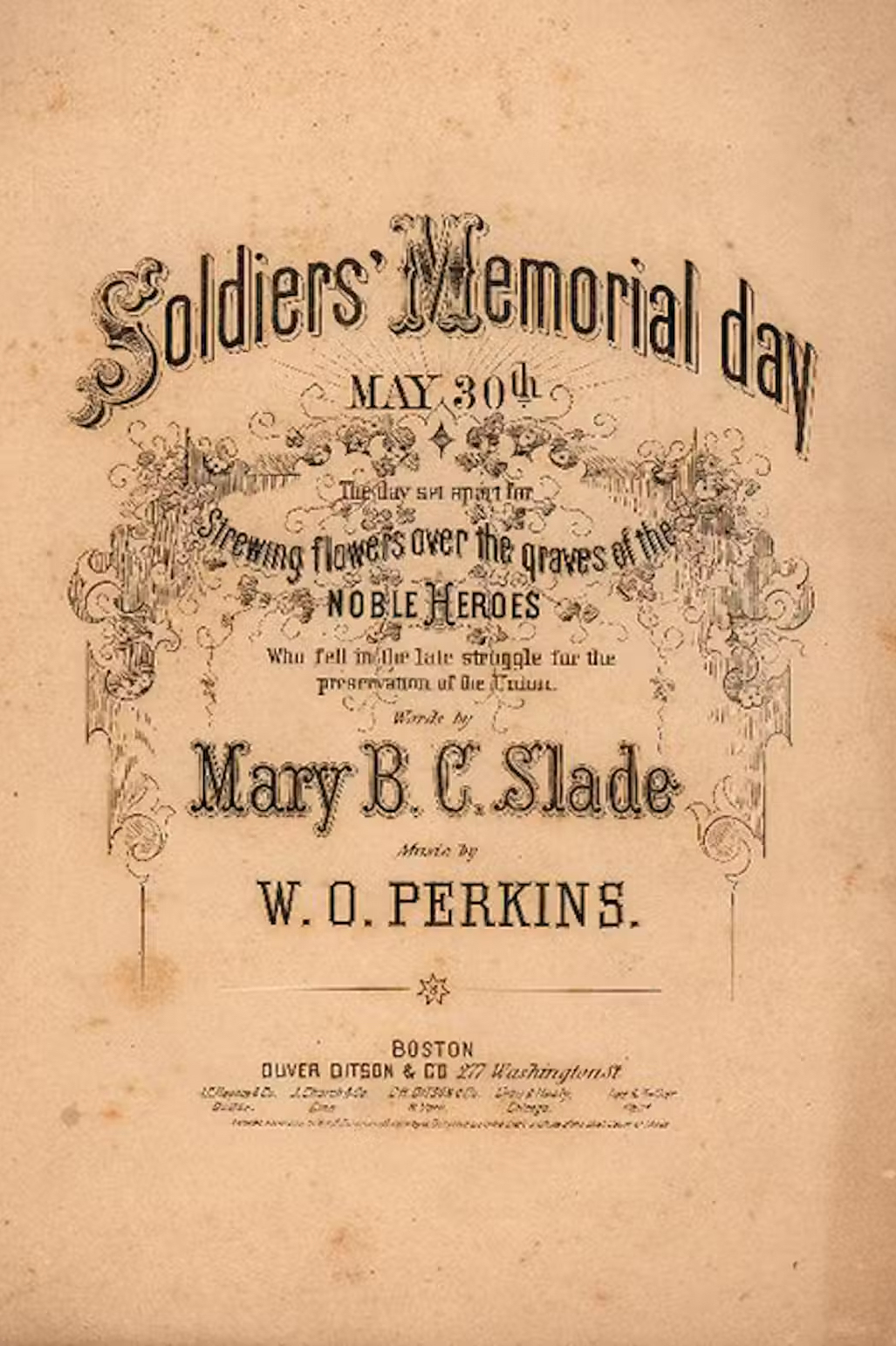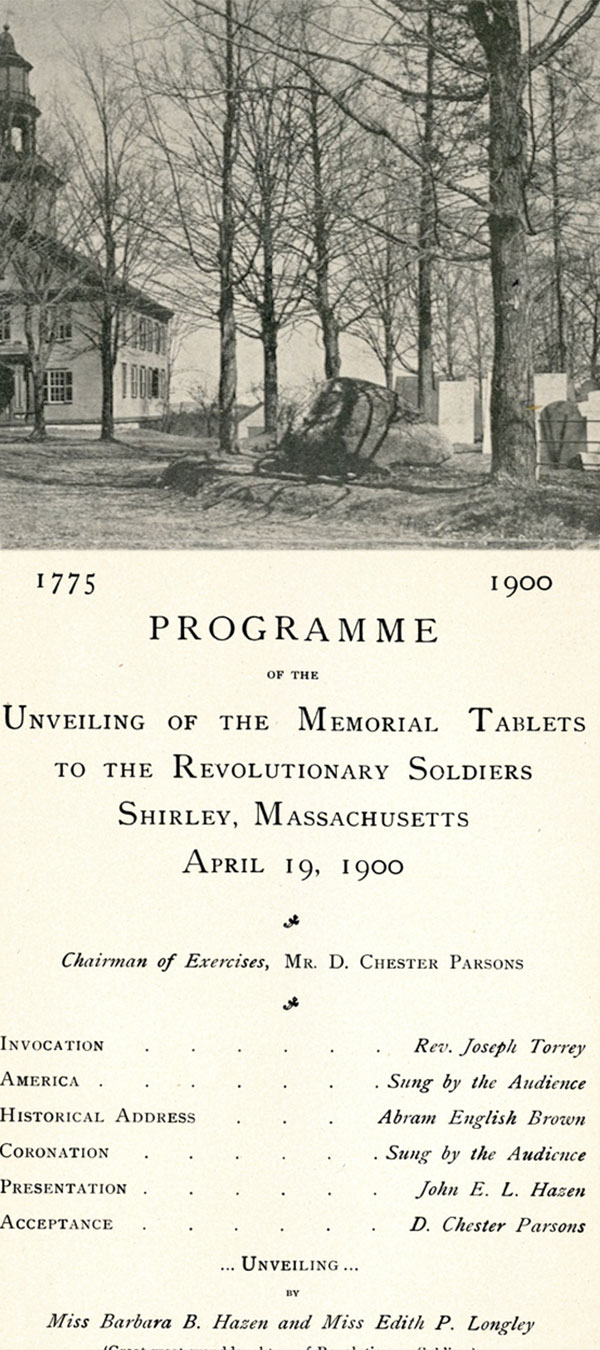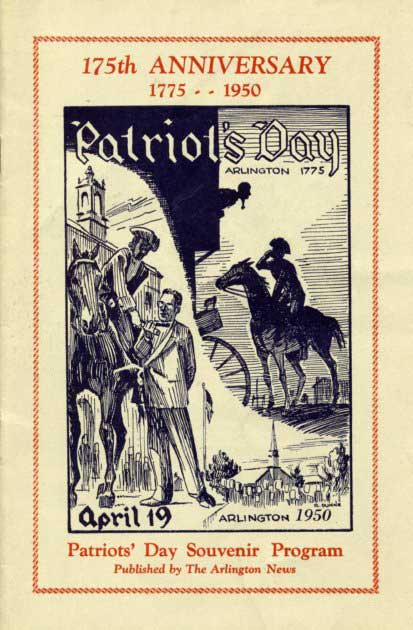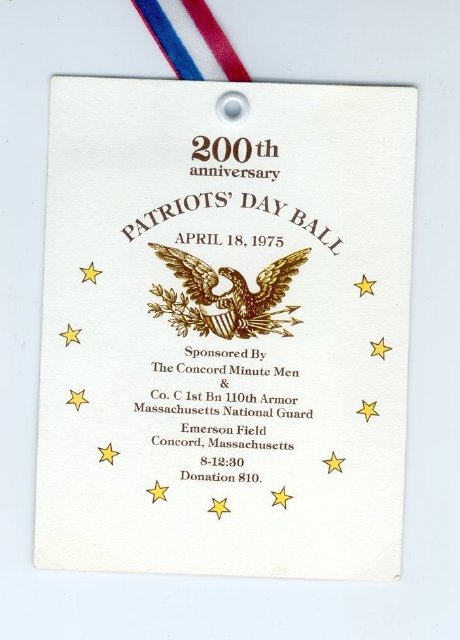1775 - 1824:
Early
Commemorative
When the American Revolution begins on April 19, 1775, the minute and militia men who answer the call to arms are local farmers, artisans, and merchants living in the communities nearby the first battle sites. Some of these men would die in battle just miles away from their hometowns. Others, who march to New York and points south, often return to Massachusetts or New Hampshire to live out the rest of their days.
As a result, the cemeteries throughout Freedom’s Way National Heritage Area are the final resting place for hundreds of soldiers who served in the American Revolution and contain the earliest markers and memorials to those killed in battle. These feature inscriptions and symbols denoting their service.
During the earliest period of our nation’s founding, monuments begin to be erected to key figures or leaders of the Revolution. The first, dedicated to General Richard Montgomery who perished in the Battle of Quebec on December 31, 1775, is sculpted in 1777 by French artist Jean-Jacques Caffieri and installed under the portico of St. Paul’s Chapel in Manhattan in the late-1780s.
While the Continental Congress authorizes the creation of a monument to commemorate the victory at Yorktown in 1781, it is not completed until 1884 and thus the first war monument in the country is erected on the site of the Battle Green in Lexington in 1799, by petition to the Massachusetts General Court.
1775
The Battles of Lexington and Concord take place April 19th
The Battle of Bunker Hill takes place in Charlestown June 17th
1776
Congress adopts the Declaration of Independence July 4th
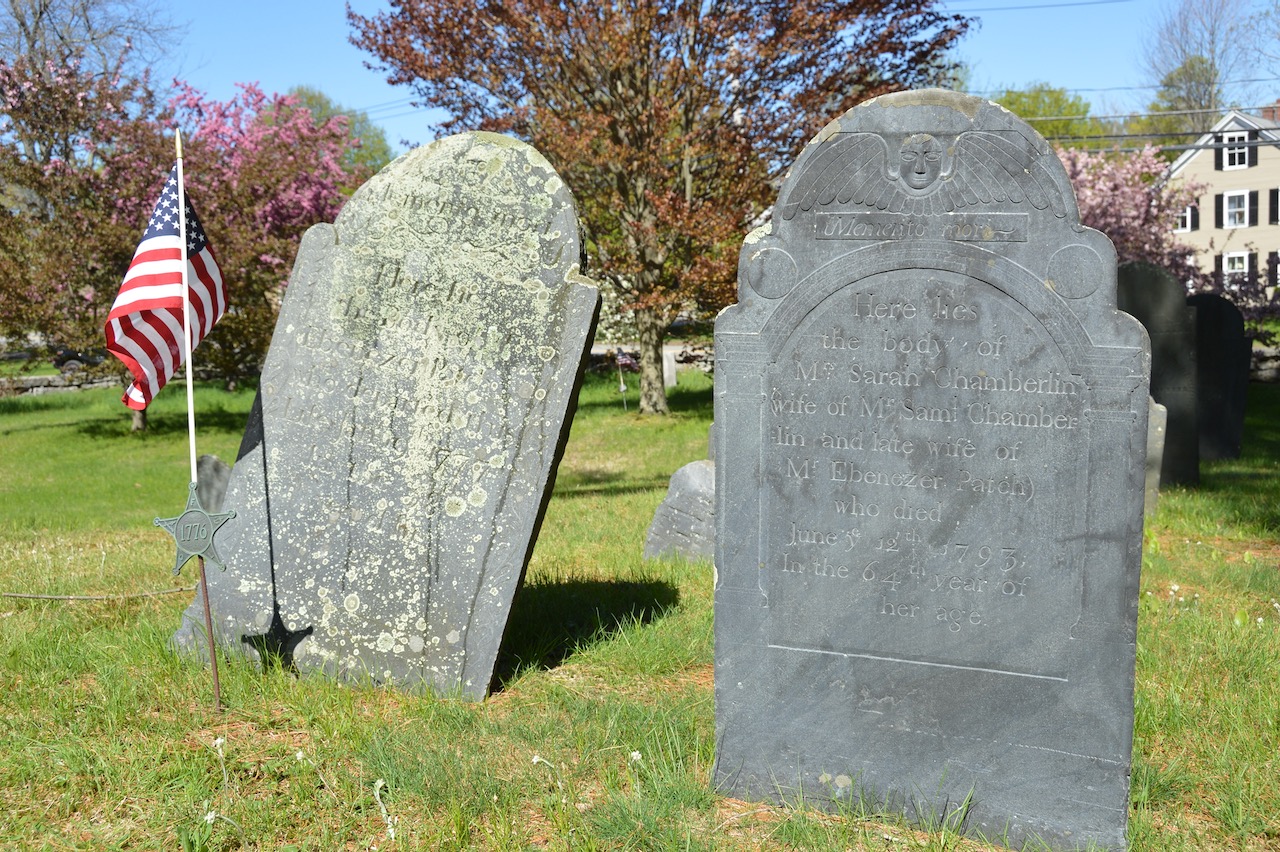
Burying grounds
When the American Revolution broke out on April 19, 1775, the minute and militia men who answered the call to arms were local farmers, artisans, and merchants from the communities nearby the first battle sites. Some of those men would die in battle just miles away from their hometowns. But even those who marched to New York and points south often returned to Massachusetts or New Hampshire to live out the rest of their days. As a result, the cemeteries throughout Freedom’s Way National Heritage Area are the final resting place for hundreds of soldiers who served in the American Revolution.
1783
The U.S. and Great Britain sign the Treaty of Paris, officially ending the American Revolutionary War September 23rd
1787
The U.S. Constitution is written and signed September 17th
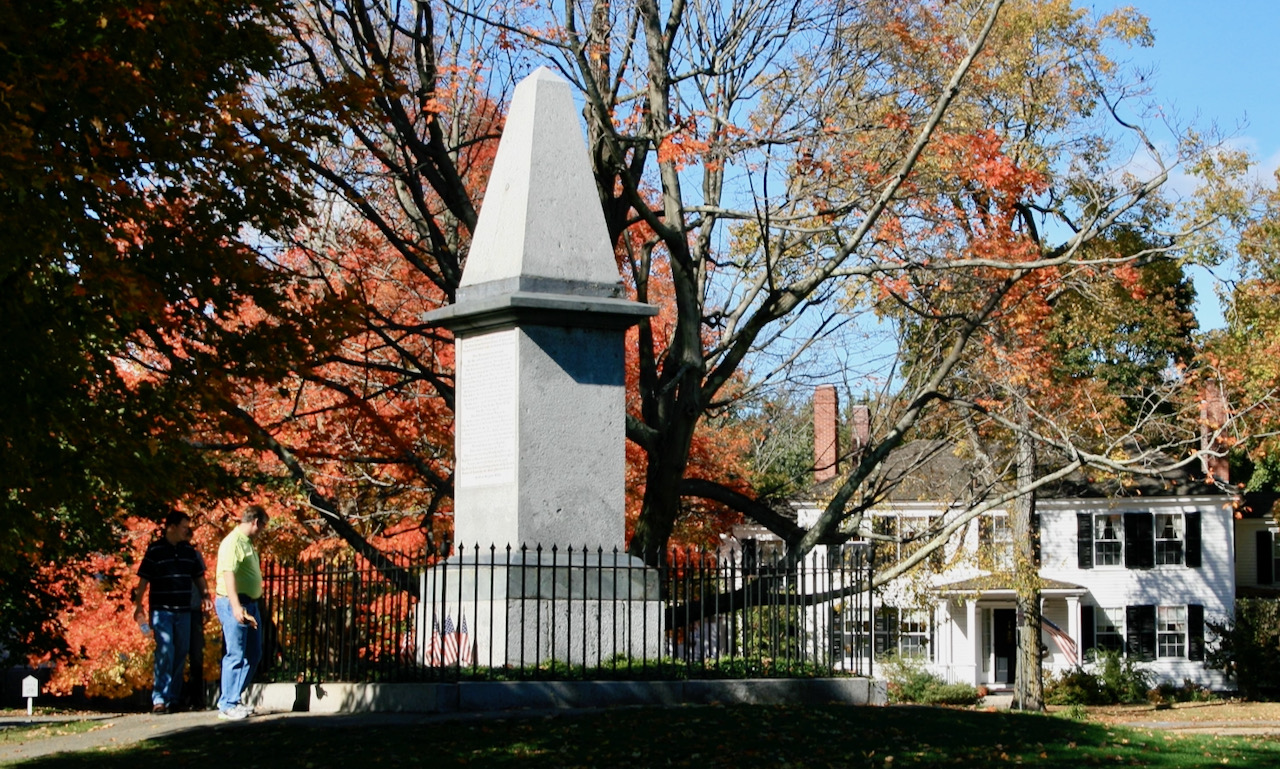
1799
Revolutionary War Monument, Lexington
The first war monument in the United States pays homage to the memory of those ‘fellow citizens’ who were “the first Victims to the Sword of British Tyranny and Oppression, On the morning of the ever memorable Nineteenth of April. Dom. 1775.”
1825 - 1874:
Expansion & Reform
Marquis de Lafayette’s tour celebrating the 50th anniversary of the Battles of Lexington and Concord, which includes laying the cornerstone on the Bunker Hill Monument and visiting the site of Boston’s famed Liberty Tree, generates commemorative fervor throughout the Heritage Area.
While there are still relatively few monuments within the Heritage Area at this time, those that are erected chiefly focus on honoring specific figures such as military heroes and men who had fought in the battles. Obelisks and plaques predominate, and their inscriptions often accuse the British of being cruel and dishonorable. A notable exception to this theme, is the marking of the site where British soldiers died at Concord’s North Bridge.
By the mid-19th century, the tradition of erecting Revolutionary War monuments begins to expand as communities recognize the importance of preserving and commemorating local history and heritage as they relate to the American Revolution while the American Civil War has a significant impact on how Americans think about memorials and memorialization and those who are killed in battle. This lays the foundation for rethinking how the American Revolution is remembered in the region.
1825
50th Anniversary of the Battles of Lexington and Concord
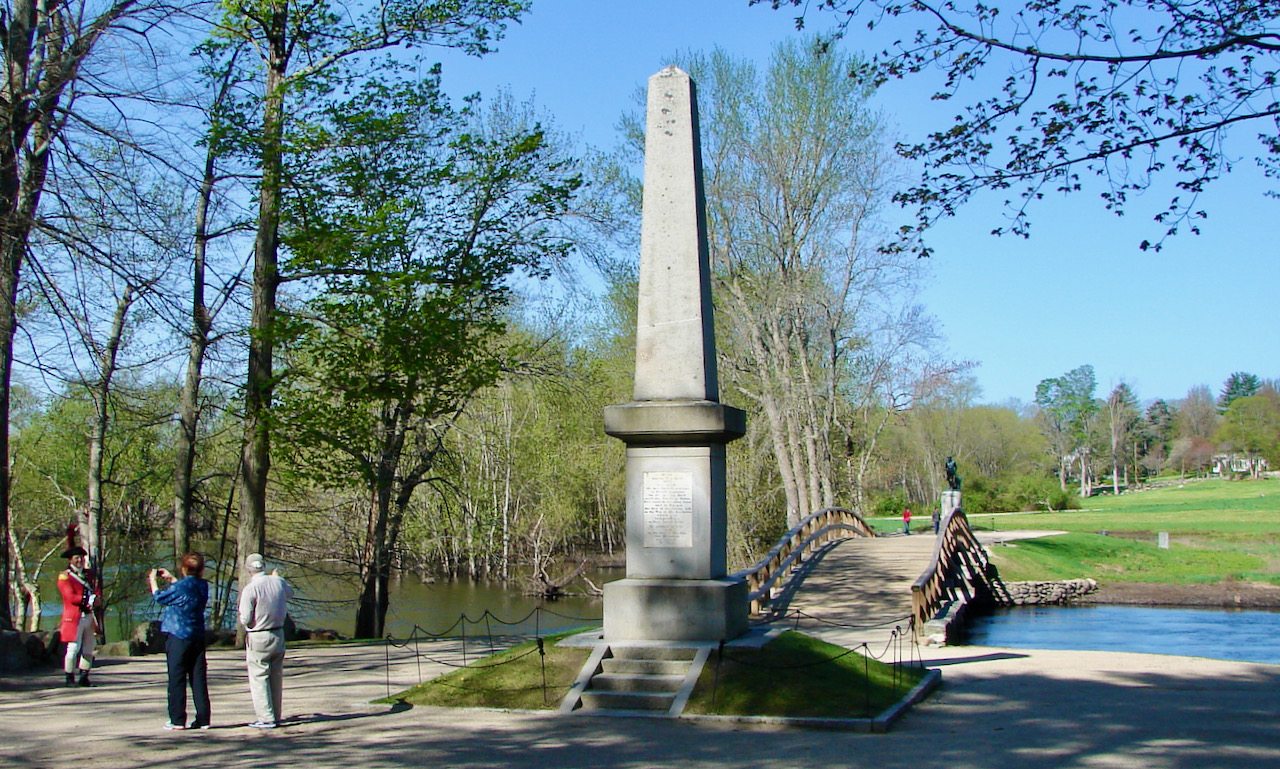
1837
1836 Battle Monument, Concord
Inspired by the 50th anniversary of the War of Independence in the Greater Boston region, Ralph Waldo Emerson unveiled his famous poem, Concord Hymn, commissioned by the Battle Monument Committee, at the dedication on July 4th.
1840
Roger Brown Historical Marker, Concord
1844
Last surviving soldier of the Battles of Lexington and Concord dies
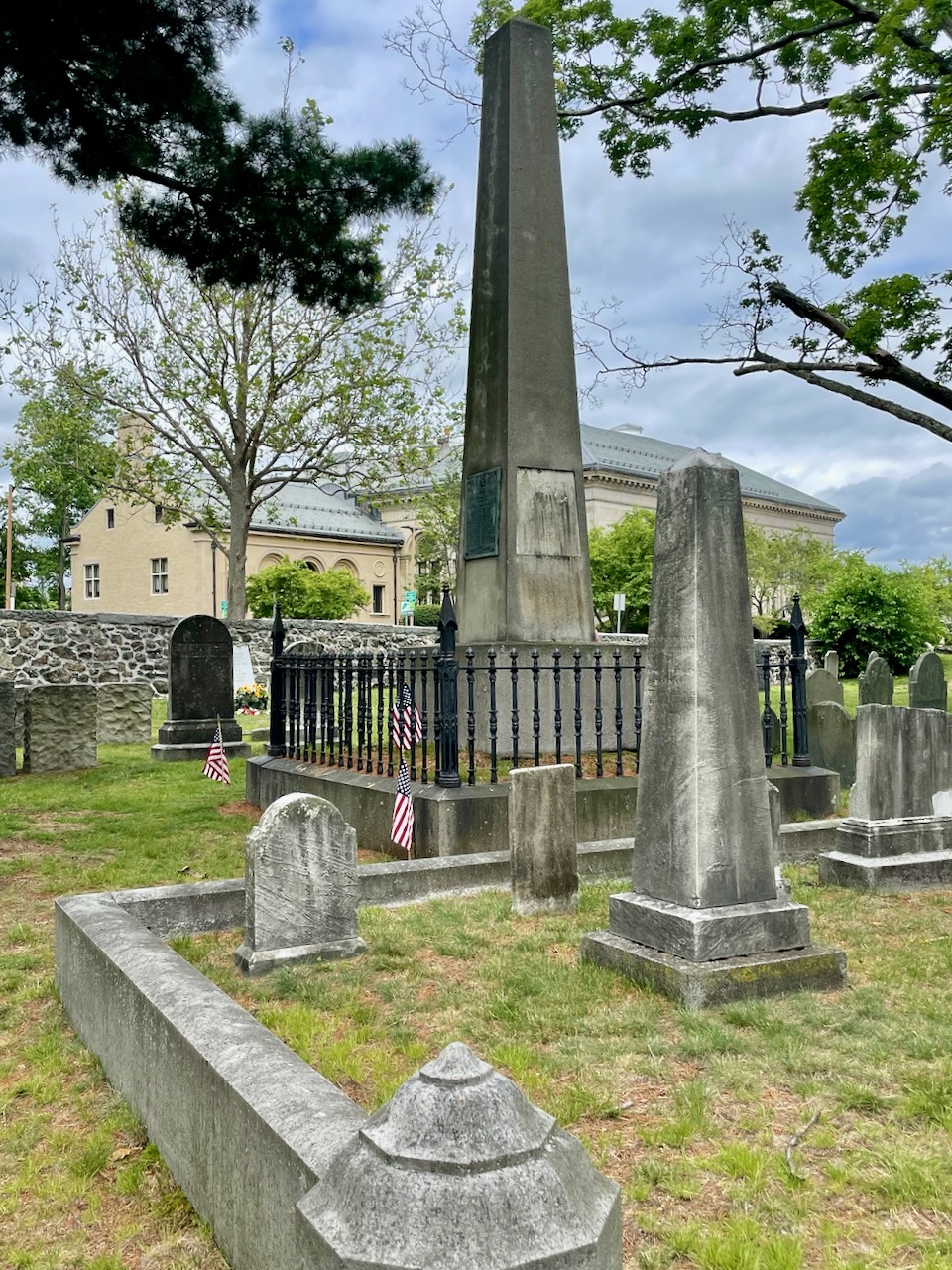
1848
Revolutionary War Monument, Arlington
Funded with donations raised by subscription and erected “over the common grave of Jason Russell, Jason Winship, Jabez Wyman and nine others… among the first to lay down their lives in the struggle for American Independence.”
1848
1851
75th Anniversary of the Signing of the Declaration of Independence
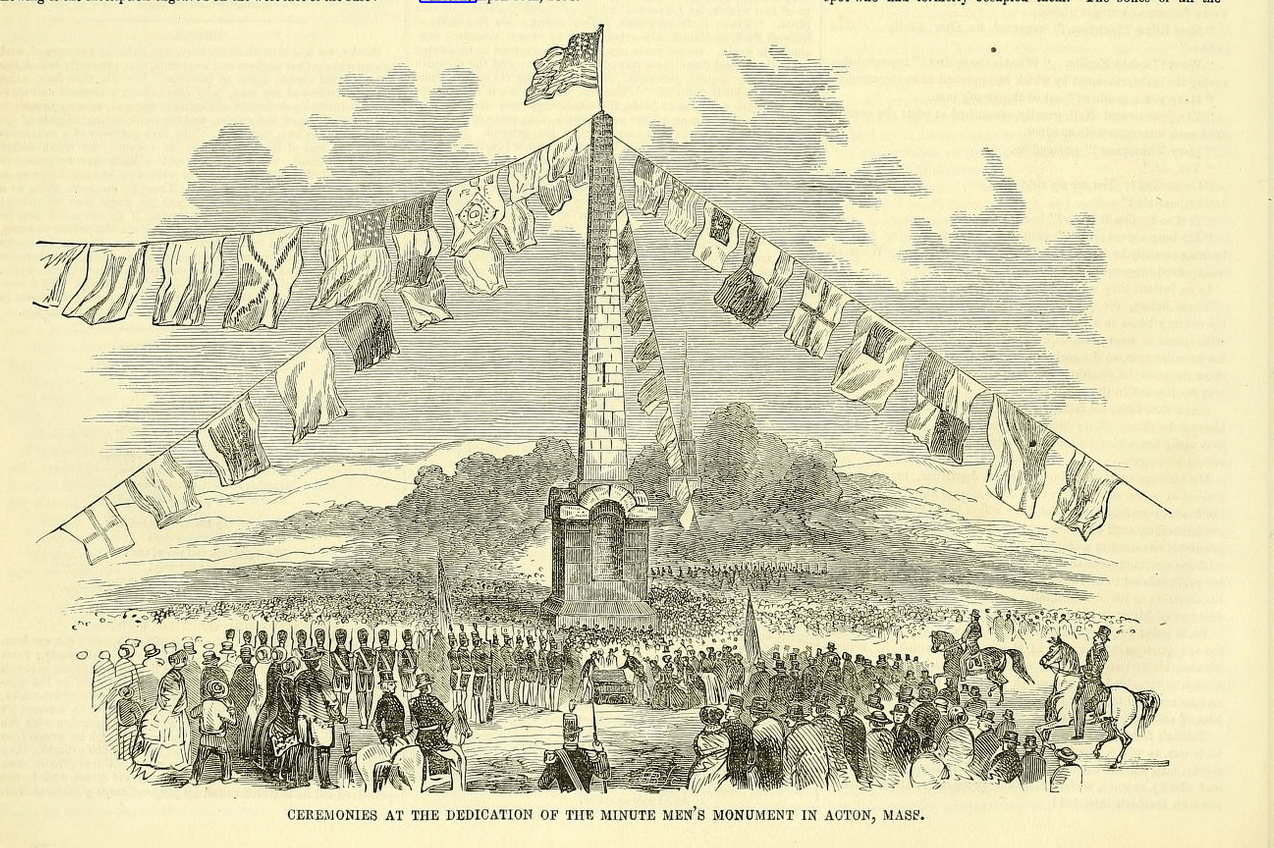
1851
Issac Davis Monument, Acton
The 75-foot obelisk commemorates “the fame of glorious deeds of patriotism” of the first officer to fall at the Concord fight and fellow militiamen James Hayward and Abner Hosmer.
1861 - 1865
Civil War
1868
Memorial (Decoration) Day first widely observed May 30th
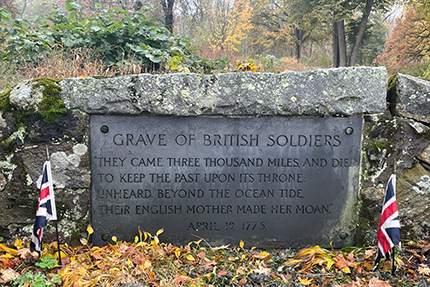
1870
Grave of British Soldiers, Concord
Marks the final resting place of the first British soldiers killed on April 19, 1775, during the Battle of Concord, who “came three thousand miles, and died, to keep the Past upon its throne.”
1873
Soldiers’ Monument, Hollis dedicated May 30th
1875 - 1924:
Romance & Patriotism
The Centennial of the Battles of Lexington and Concord ushers in a period of reflection giving rise to a romanticized view of the Revolution. A surge in Patriotism, propelled by the founding of groups such as the Sons and Daughters of the American Revolution, provides momentum to recognize those who served in the Revolutionary War as well as their descendants as immigration begins to change the country’s demographics.
During this era, monuments become more diverse with the first memorials in the region dedicated to women and African Americans erected. These changes underscore political and social developments in the United States as women highlight their participation fighting for freedom during the Revolutionary War while pursuing the right to vote.
By the end of this period, monuments begin to be designed as part of larger cultural landscapes as a recognition of preserving historic sites begins to emerge.

1875
The Minute Man, Concord
A singular farmer relinquishing his plow to take up arms in defense of his land, The Minute Man serves as the iconic image of the ideals that fueled the American Revolution.
1876
Centennial of the Signing of the Declaration of Independence
1878
Old Men of Menotomy Monument, Arlington
Samuel Whittemore Monument, Arlington
1880
Colonel William Prescott Memorial Stone, Groton dedicated February 20th
1883
Lexington Committee on Historical Monuments and Tablets established and recommends four principal monuments, three memorial stones and nine memorial tablets.
Revolutionary War Memorial Tablet, Stow dedicated May 16th
1884
Battle Line Boulder (Line of the Minute Men), Lexington
British Retreat Marker, Lexington
Captain John Parker Memorial, Lexington
Meetinghouses Marker, Lexington
Percy’s Cannon Monument, Lexington
1885
Concord celebrates 250th anniversary of its founding
First Provincial Congress Memorial, Concord
Meriam’s Corner Monument, Concord
Muster Field Monument, Concord
Bloody Bluff Monument, Lexington
Hayward Well Monument, Lexington
Slate Tablet at Revolutionary War Monument, Lexington
1886
“What a Glorious Morning for America” Plaque, Lexington
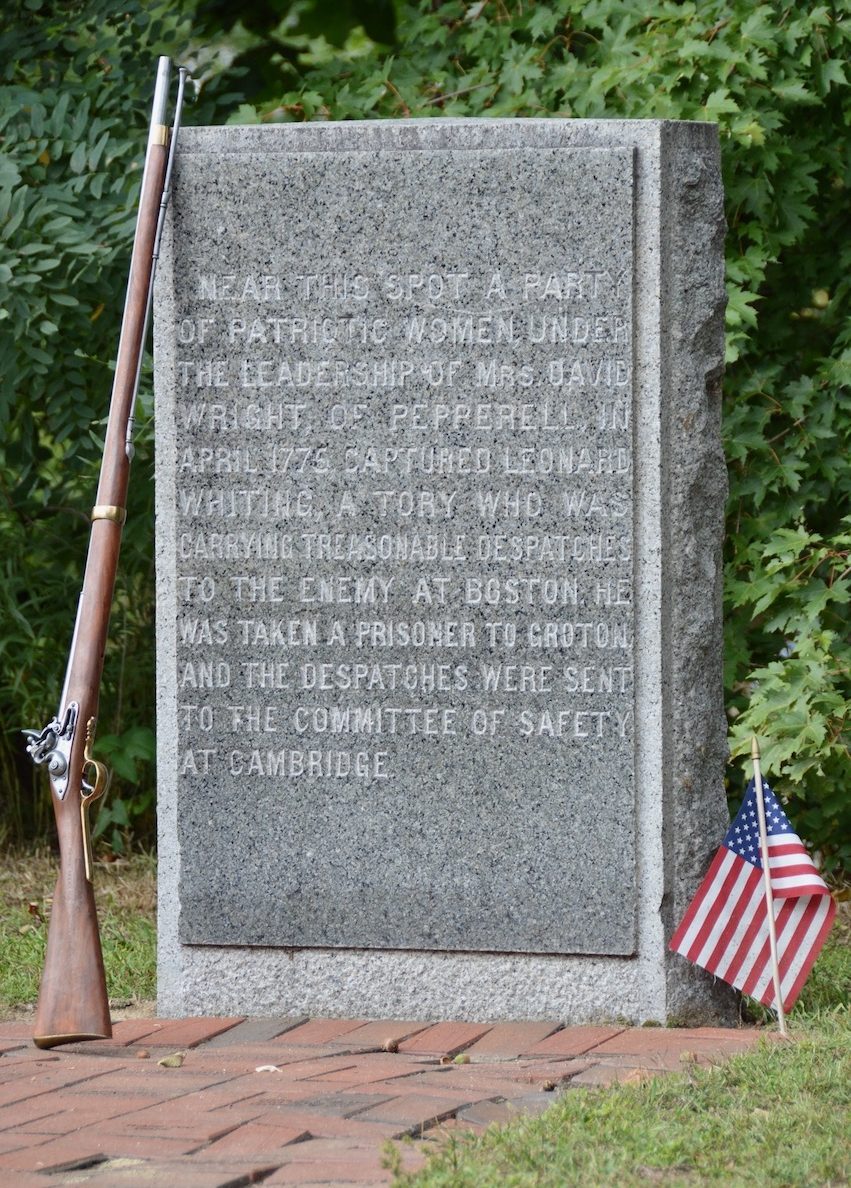
1889
Prudence Wright Memorial Stone, Pepperell
The first memorial to a woman in the Heritage Area, and one of the earliest to a woman in the country, the Prudence Wright Memorial Stone commemorates the heroic actions of a woman’s militia that captured a Tory spy.
Revolutionary War Monument, Medford
1892
Wooden markers installed by the Sons of the American Revolution in Acton and Stow on July 4th to mark the graves of those who fought in the American Revolution
1893
1894
Sons of the American Revolution adopt and formalize marker program using a design adapting the cross of Saint Louis with Daniel Chester French’s Minute Man at the center
Joseph Robbins Home Site Memorial Stone, Acton dedicated April 19th
Calvin and Luther Blanchard Memorial Stone, Acton dedicated April 19th
Issac Davis Home Site Marker, Acton dedicated April 19th
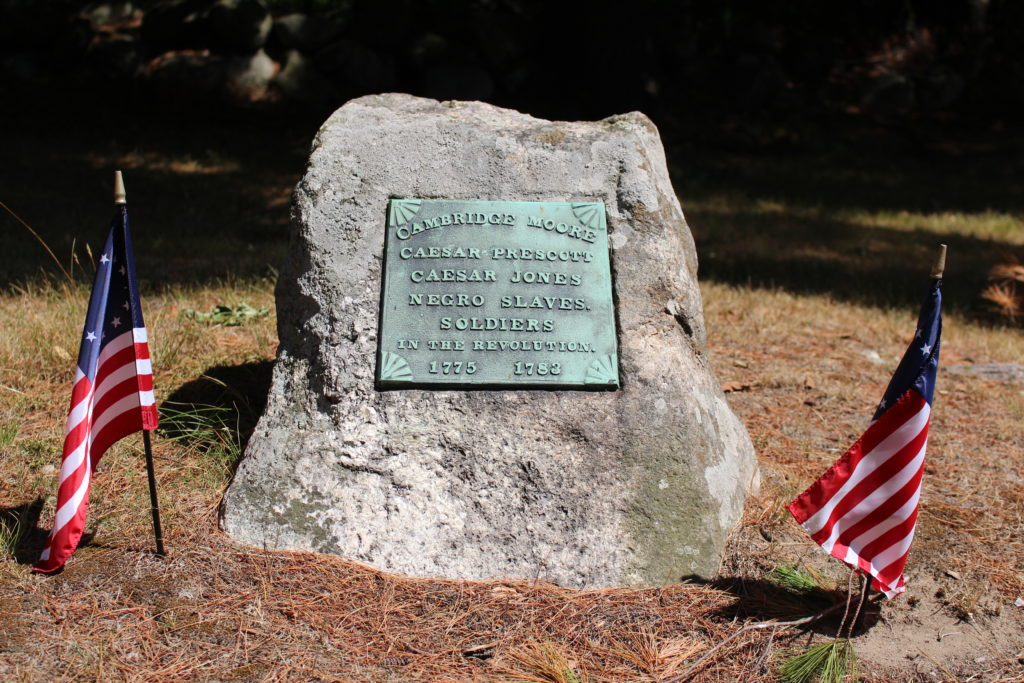
1896
African Reservation Monument, Bedford
Possibly the first monument in the country to acknowledge African Americans who served in any war by name, the African Reservation Monument is dedicated on the first Patriots’ Day.
1896
Colonel John Robinson House Marker, Westford dedicated April 19th
Revolutionary War Monument, Sudbury dedicated on Bunker Hill Day
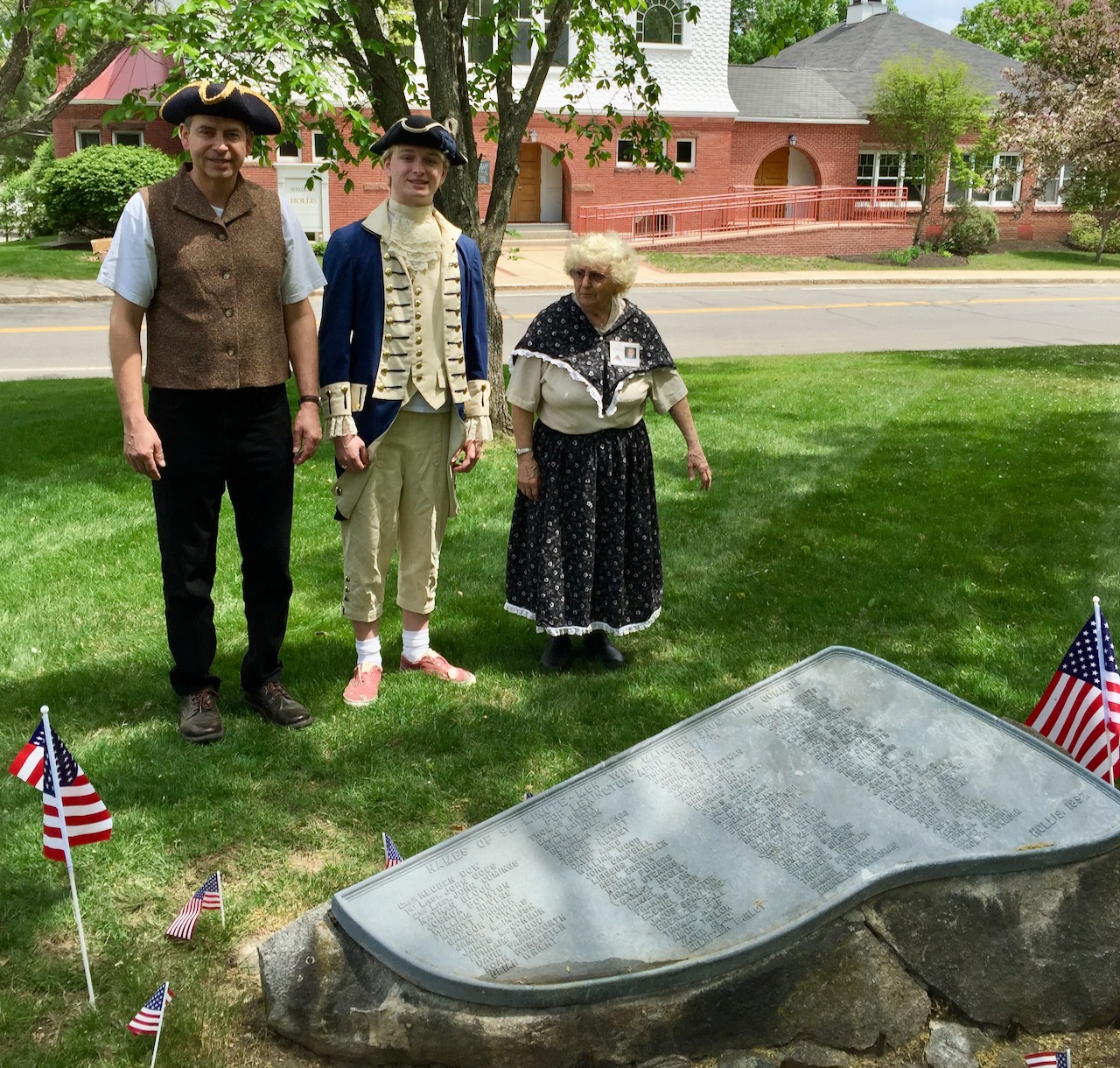
1898
Nevens Stone, Hollis
Described as the first monument on which can be read the names of all who responded from a singular community to the Alarm of April 19, 1775.
1899
Minute Man Statue, Lexington unveiled April 19th
Count Rumford Statue, Woburn
Bunker Hill Memorial Bench, Pepperell dedicated November 1st
1900
125th Anniversary of the Battles of Lexington and Concord
Captain Isaac Davis Birthplace Stone, Acton dedicated April 19th
Isaac Davis Stone, Acton dedicated April 19th
American Revolution Memorial, Shirley dedicated April 19th
April 19th Muster Plaque, Shirley dedicated April 19th
Sarah Bradlee Fulton Memorial, Medford dedicated May 26th
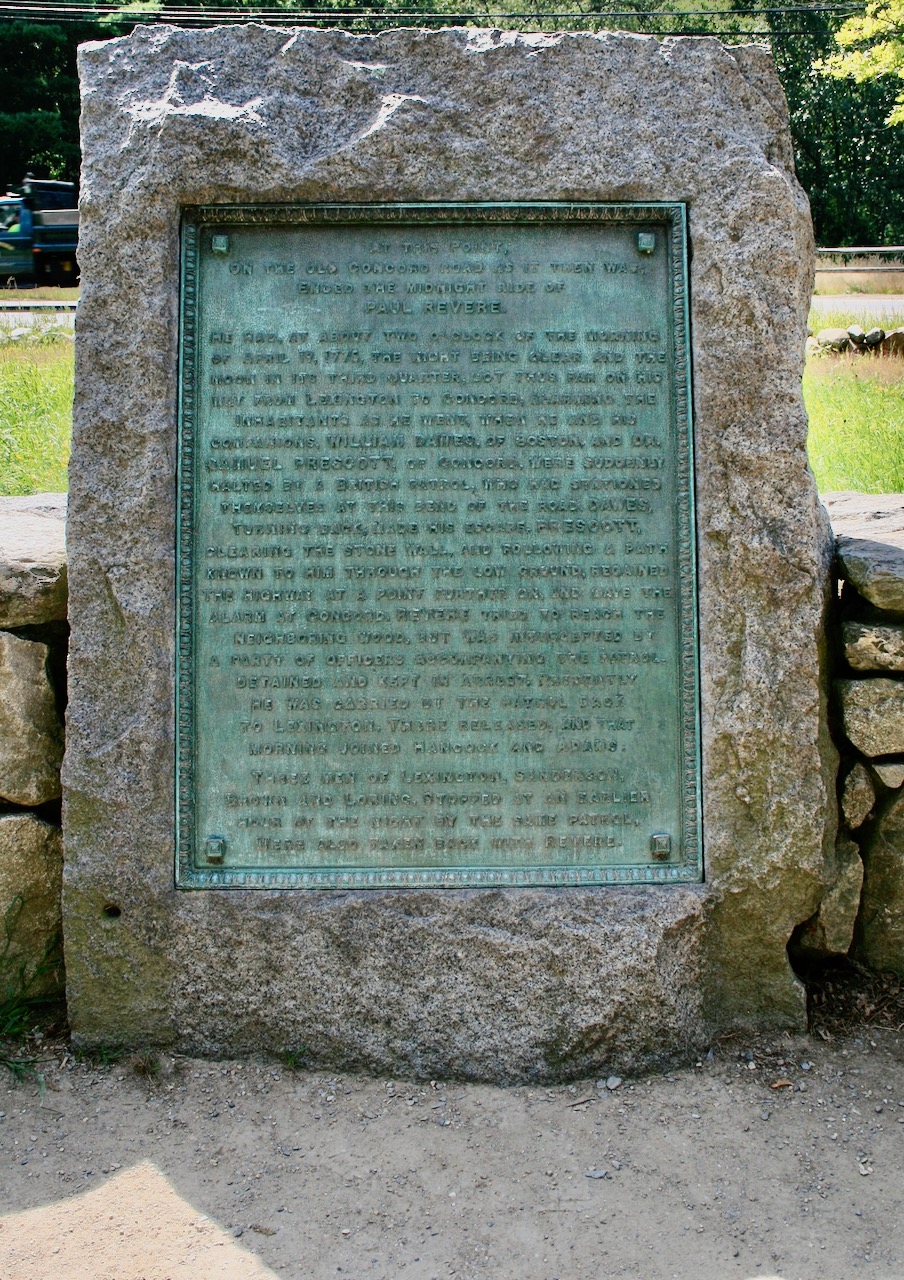
1902
Paul Revere Capture Monument, Lincoln
Marking the site where Paul Revere was apprehended by the British on April 18, 1775, its location expands the narrative from battlefields and burying grounds to place the actions of the day into the larger landscape.
1902
Job Lane Memorial Boulder, Bedford
1903
Francis Barker Memorial Stone, Acton dedicated April 19th
Joseph Brown Memorial Stone, Acton dedicated April 19th
1904
New Hampshire Soldiers Bunker Hill Memorial, Medford dedicated October 29th
1905
Isaac Hall House Marker, Medford placed June 14th
Revolutionary Soldiers’ Monument, Westminster
1906
Oliver Carter Monument, Leominster
1909
The Powers Stone, Hollis
Lower Common Watering Trough, Lunenburg
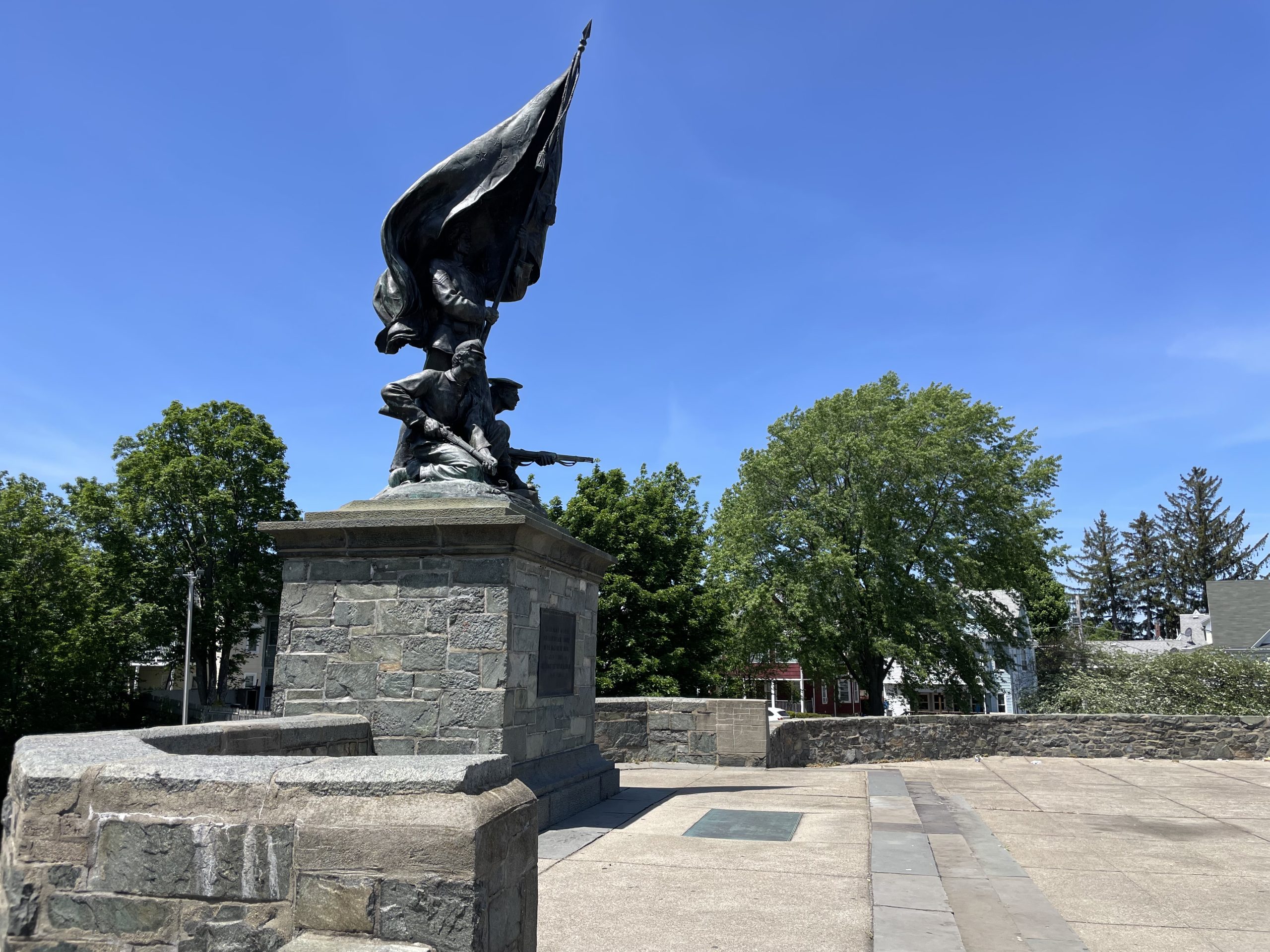
1910
Revolutionary War Tablet at Bell Rock Memorial Park, Malden
Designed as a cohesive, contemplative landscape integrating multiple monuments and memorials, Bell Rock Memorial Park is one of the earliest to merge art and formal landscape elements to memorialize those who served their country in battle.
1910
Men of Leominster Revolutionary War Plaque, Leominster
Site of the Old Belfry Marker, Lexington
Revolutionary War Monument, Nashua
1914
Washington at the Wayside Inn, Sudbury
Militia Training Ground Site Marker, Sudbury dedicated November 1st
1915
John Buttrick Bas-Relief Monument, Concord
Elm Street Cemetery Marker, Milford dedicated October 19th
1919
Honor Roll Plaque, Brookline
1920
Loammi Baldwin Statue, Woburn dedicated April 19th
1924
War Memorial, Westford
Revolutionary War Memorial, Woburn
1925 - 1974:
Modernism & Memory
During this period there is a focus on adding memorials that honor broader themes of American history and freedom. The overwhelming impact of both World Wars manifests itself throughout the region as monuments, memorials and markers are created to honor those who served, reflecting the continuation of American ideals fought for in the Revolutionary War. In many cases, if communities do not have a Revolutionary War monument, they use this as an opportunity to create monuments to all wars.
In 1930, the Massachusetts Bay Colony Tercentenary Commission erects 275 roadside markers to commemorate the colony’s 300th anniversary. Each describes a moment deemed important in the Commonwealth’s Colonial history, often through the narrow lens of settlement and colonialism. Their design and implementation herald a new type of marker – for those traveling by car.
A desire to preserve and commemorate historic sites related to the Revolution in the region is ongoing and Minute Man National Historical Park is created in 1959. Plaques and smaller markers continue to be placed at sites of historical significance, reflecting a growing interest in accurate historical representation.
1925
150th Anniversary of the Battles of Lexington and Concord
1926
Mead Stone, Acton
Women of Menotomy Monument, Arlington
Minute Man Memorial, Pepperell dedicated July 26th
War Memorial, Lincoln dedicated November 11th
1929
Revolutionary War Tablet, Groton dedicated May 30th
War Memorial Flagpole, Milford
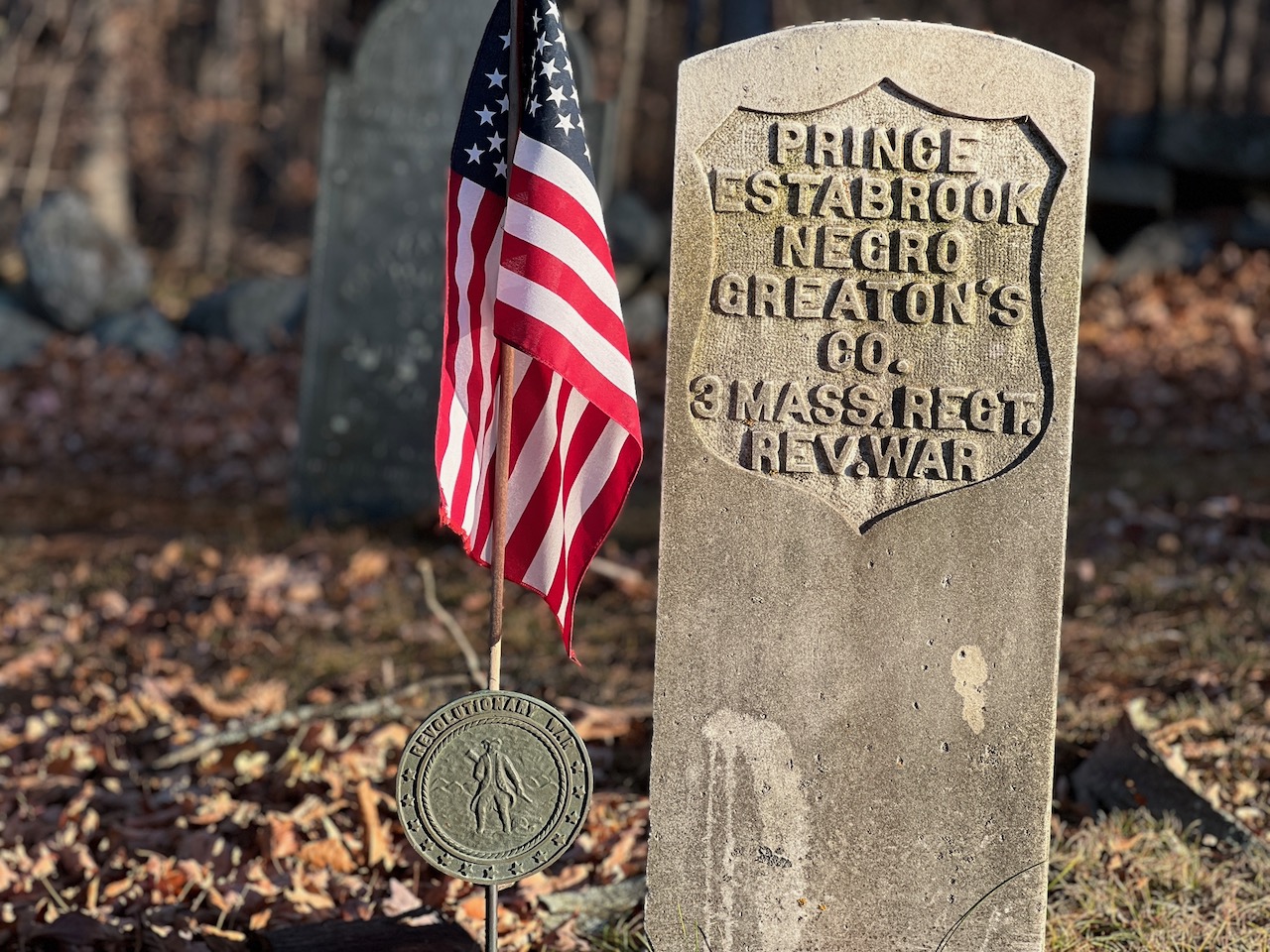
1930
Prince Estabrook Grave Marker, Ashby
Installed one hundred years after his death, following a petition of the Brigadier General James Reed Chapter of the Sons of the American Revolution to the U.S. Department of War, the marker denotes the previously unmarked final resting place of one of the first Black Patriots to fight in the American Revolution.
1930
War Memorial, Pepperell dedicated August 23rd
1939
Soldiers and Sailors of All Wars Plaque, Carlisle
Colonial Taverns
In colonial America, taverns were commonplace throughout Freedom’s Way National Heritage Area. Much more than just watering holes, they served an important purpose in the community as a place for townsfolk to gather and discuss vital topics. This proved especially important in the years leading up to the American Revolution. Taverns became Patriot refuges, where decisions were made about separation from the Crown and what a more democratic form of government would look like. As British-colonial relations deteriorated, taverns became meeting spots for Patriot militias to assemble and prepare for battle.
1940
1949
Lexington Minute Man Marker, Lexington unveiled April 19th
Liberty Square Monument, Littleton
1950
175th Anniversary of the Battles of Lexington and Concord
Veteran’s Memorial Park, Bedford
Benjamin Wellington Historic Marker, Lexington
1951
Revolutionary War Monument, Littleton dedicated September 16th
Abner Miles Grave Marker, Westminster
1955
Concord Fight Plaque, Concord
1957
Veterans Monument, Mason dedicated on Memorial Day
1959
Minute Man National Historical Park established September 21st
1961
Colonel James Barrett House and Barn Plaque, Concord erected April 19th
1967
Common Marker, Sudbury
1968
Colonel John Robinson Memorial, Westford
1969
Patriots’ Day officially observed annually on the third Monday of April in Massachusetts
1975 - Today: Contemporary
The Bicentennial ignites a growing focus on preserving and interpreting Revolutionary War sites within the region with an emphasis on educational and historical context. New memorials are created as communities reevaluate their role in the Revolutionary War with an emphasis on portraying a more inclusive view of history.
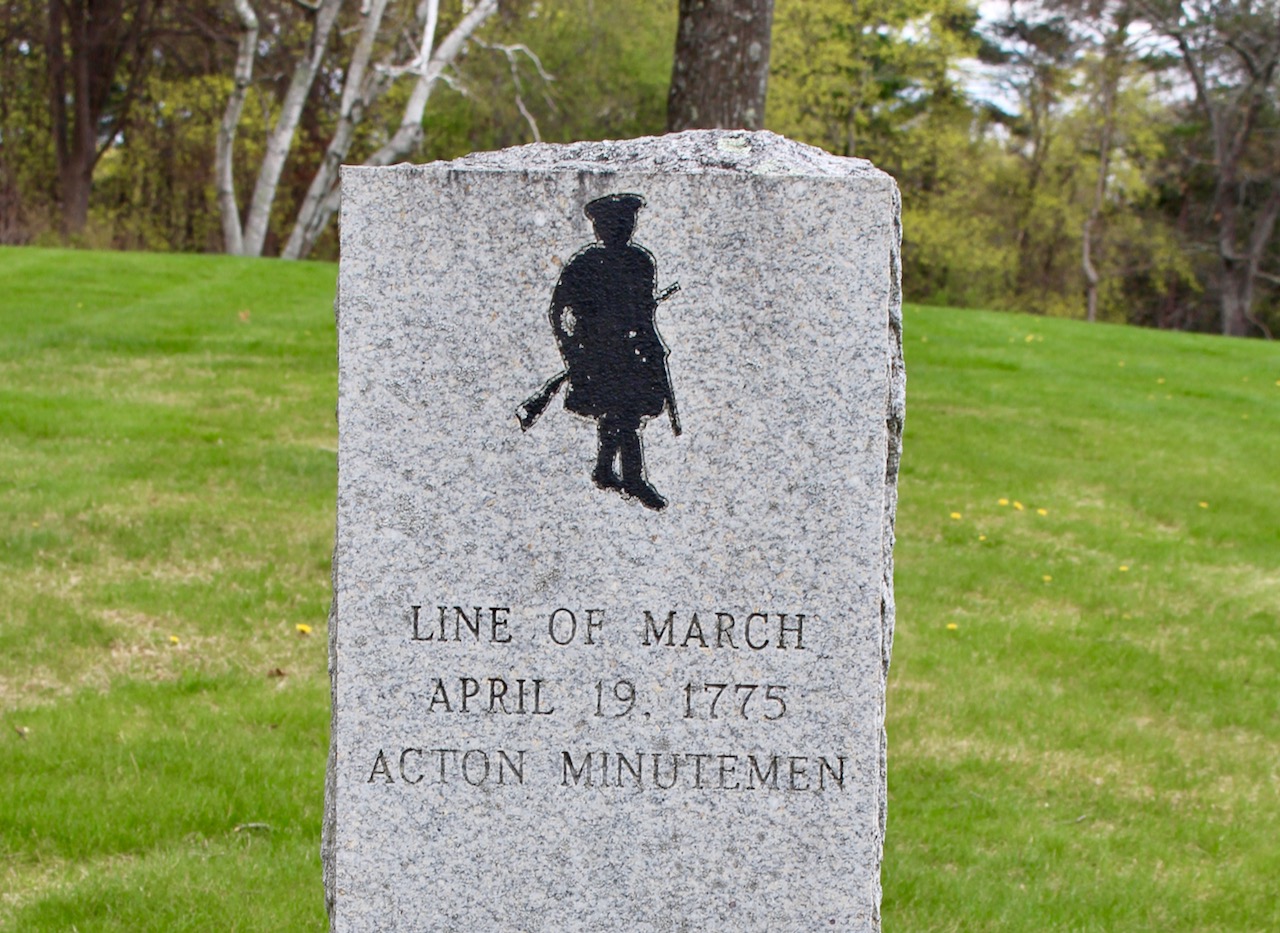
1975
Isaac Davis Trail, Acton
A six-mile-long trail commemorating the route taken by Captain Isaac Davis and the Acton Minute Company on their march to Concord on April 19, 1775. Listed on the National Register of Historic Places it provides a framework to memorialize the events of the April 1775 through time and space.
1975
Minuteman Muster Location Marker, Carlisle dedicated April 19th
Captain Isaac Davis Plaque, Concord dedicated April 19th
U.S. Flag on Lexington Green, Lexington
1976
Bicentennial Marker, Bolton
American Revolution Memorial, Sterling
Bicentennial Monument, Townsend
1977
1978
The Foot of the Rocks, Arlington dedicated April 19th
British Revolutionary War Soldiers' Grave Sites
Approximately 24,000 to 25,000 British soldiers are estimated to have died over the course of the American Revolution. While about half of the British forces were loyalists who lived in the colonies, the other half was composed of soldiers who had traveled overseas. Considering the impossible cost and logistics of sending the deceased soldiers home, British Army regulations called for the dead to be buried onsite at the battlefields. Throughout New England, there are examples of this phenomenon, from mass graves in Arlington and Boston to single burial sites along Concord’s Battle Road.
1999
American Revolution Soldiers Marker, Bedford dedicated on Memorial Day
2000
225th Anniversary of the Battles of Lexington and Concord
David Lamson Way, Arlington
NPS Battle Road Trail project erects granite markers along the trail including Battle Road Markers, Milestone Markers, British Grave Markers, and Archeological Site Markers.
2002
Minuteman Line of March Markers, Bedford
2008
Prince Estabrook Memorial, Lexington dedicated April 21st
2009
Revolutionary War Monument, Dunstable
2012
Captain Isaac Hall Hitching Post, Medford dedicated April 19th
2018
American Revolution Memorial, Lancaster
2019
Colonel John Robinson Historical Marker, Westford
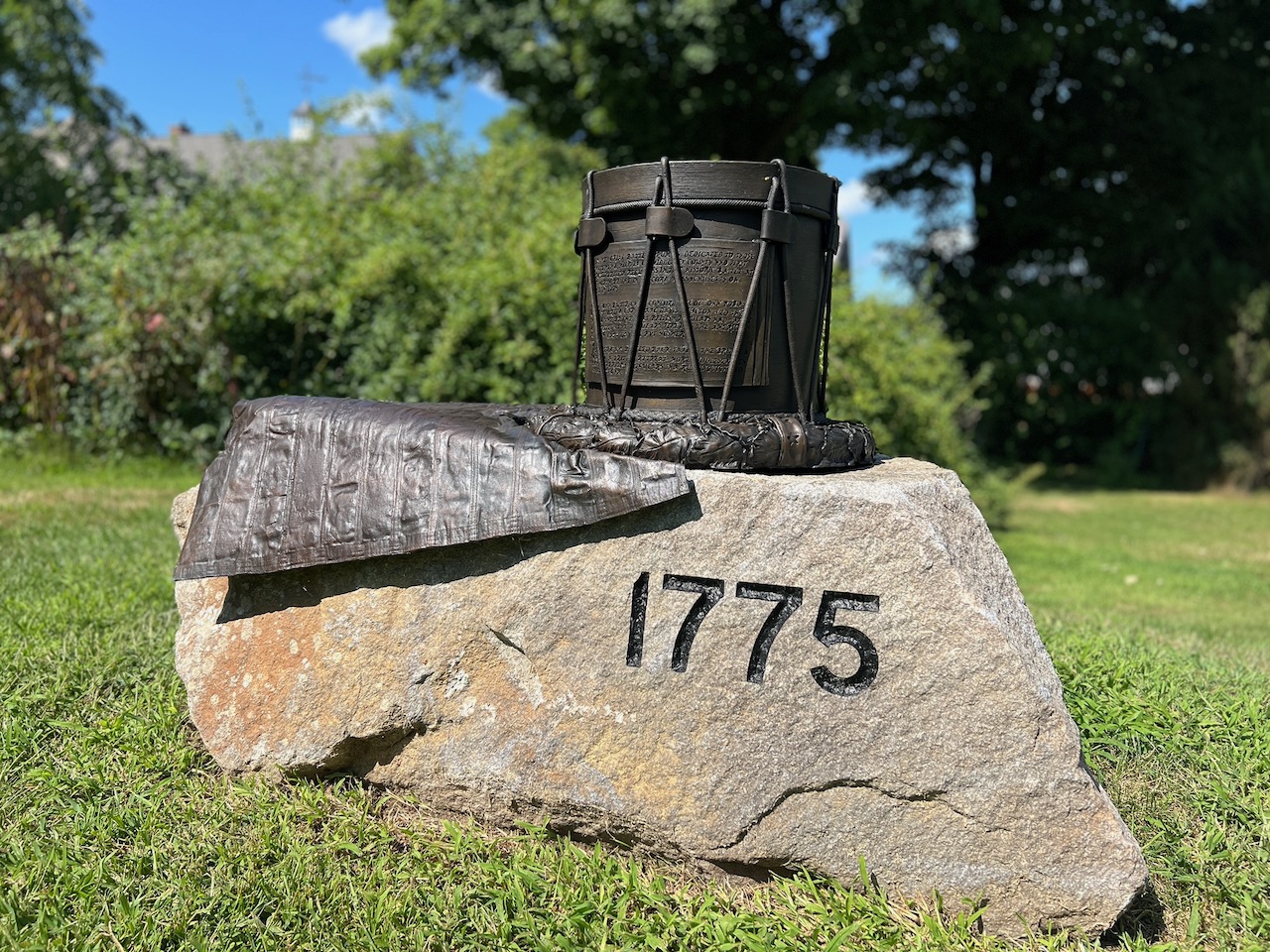
2021
Revolutionary War Memorial Drum Monument, Westford
A bronze battle drum atop a flat surfaced boulder, the Revolutionary War Memorial Drum Monument recognizes the 280 men who represented Westford, Massachusetts during the Revolutionary War, through a contemporary lens.
2021
Veterans Tribute, Boxborough dedicated November 11th
2024
Black Soldiers of the American Revolutionary War Memorial, Malden dedicated June 28th
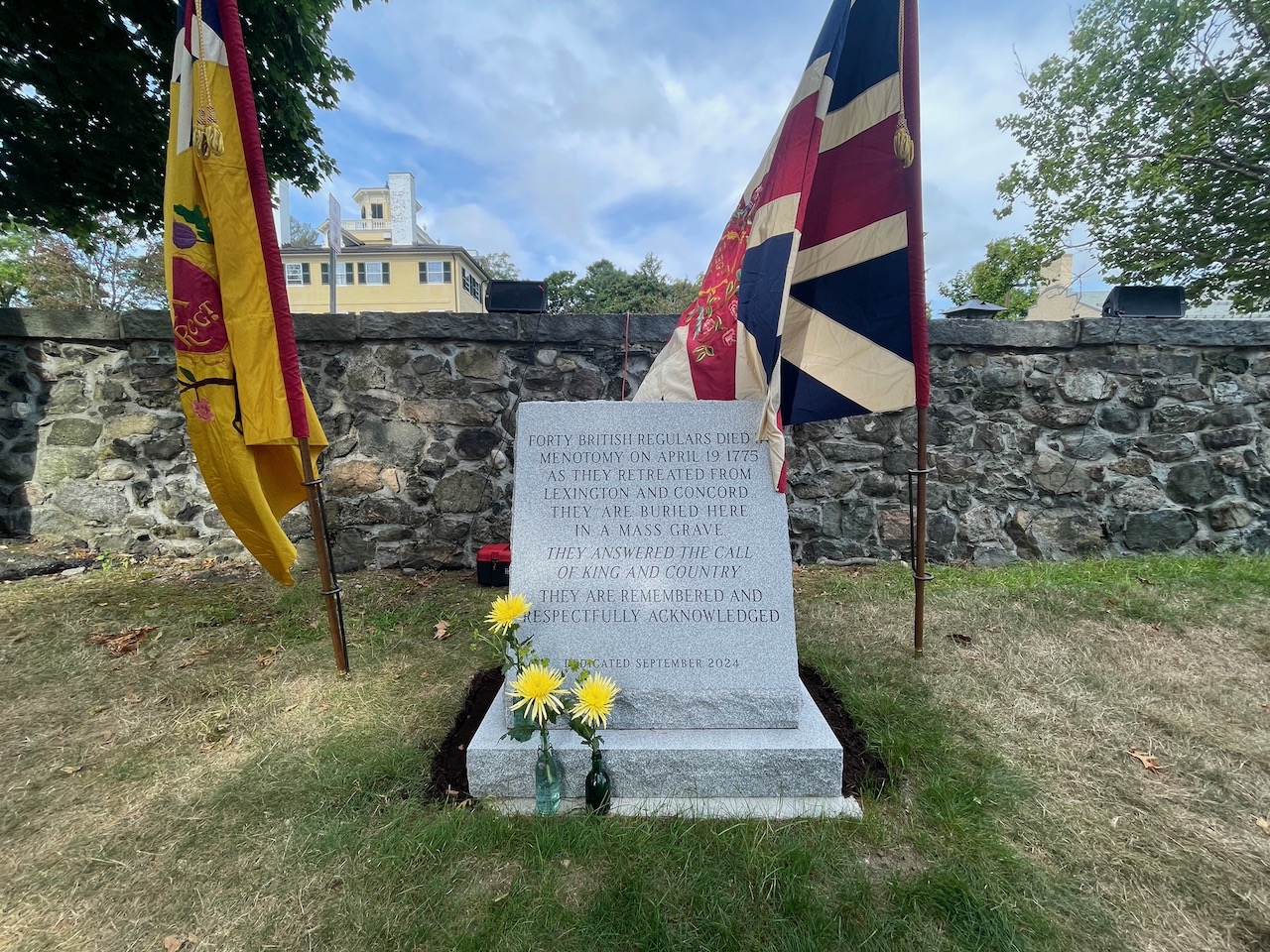
2024
Fall Crown Soldiers Monument, Arlington
Placed at the Old Burying Ground in memory of approximately 40 British soldiers killed in the Battle of Menotomy on April 19, 1775 and buried in a mass grave recently confirmed by a ground penetrating radar study.


